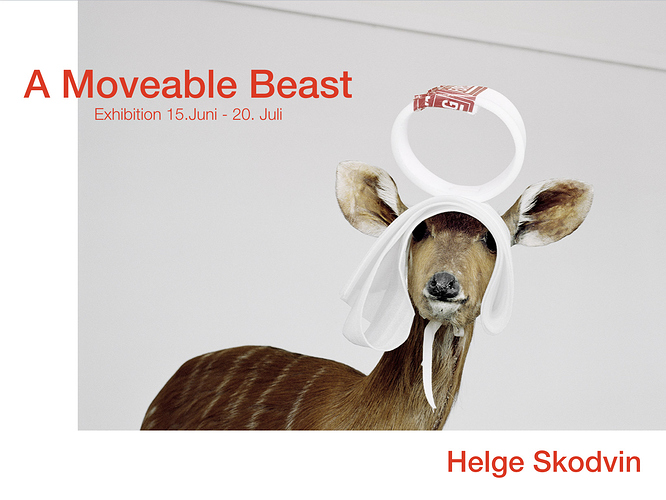I anledning nyåpningen av Naturhistorisk museum i Oktober har vi valgt å vise Helge Skodvins prisvinnende serie ‘A Moveable Beast’ som vår sommerutstilling. Den åpner på Lørdag og står til 20. Juli.
I 2013 stengte De naturhistoriske samlinger i Bergen dørene for publikum på grunn av ombygging og renovering av den ærverdige bygningen fra 1865. Samtlige dyr og objekter i samlingen måtte derfor flyttes til midlertidig oppbevaring andre steder i byen. Ikke en enkel oppgave når dyrene er store og skjøre. Noen av dyrene er ute av sitt display for første gang på nesten 150 år. A Moveable Beast er en prisvinnende dokumentasjon av hvordan dyrene hadde det under denne flyttingen.
Serien vant 1.Pris hos høythengende Årets Bilde i kategorien Dokumentar Norge
Dokumentar Norge | Årets bilde
og fikk nylig fin omtale i Aftenbladet : Et absurd dyrskue
Vi gleder oss til åpning og håper å se mange av dere i løpet av sommeren 
English :
The exhibition in the Natural History Collection in Bergen, Norway are undergoing a major restoration, and will be closed for at least five years. Due to this all the animals are being moved to a new temporary storage facility on the other side of town. Not a simple task when the animals are big and fragile. Some of the animals are out of their display cases for the first time in almost 150 years.
Between 1871 and 1973, when they were designated as a fully protected species, about 30,000 polar bears were shot on Svalbard. In the 1884 season alone about 300 animals were killed. The best place for hunting these white giants of the North was Kong Karls Land, a small archipelago that lies some 200 kilometres east of Spitsbergen. The animals were slaughtered, and their flesh was eaten. The pelts were prepared and transported to the mainland. One was bought by furrier Carl Brandt in Bergen, whose establishment was in the centre of the city. Brandt donated this pelt to Bergen Museum. In 1908, the Museum obtained a polar bear cub, and an unidentified seal was also put on display. Ever since, these three specimens have stood, frozen solid, as it were, in a polar tableau; 106 years in a display case. Until now, that is.
It is almost 150 years since the Natural History Collections were given their own buildings on University Hill in Bergen. Most of the interior and many of the animal exhibits have remained unchanged since 1866. When the collections were established, Norway was a poverty-stricken country, but it was decided to invest heavily in this museum, which meant a great deal for the national development and identity of this country. The grand whale hall in particular is quite unique in a European context, as a documentation of its time and of a way of looking at the world. Museums of this type are themselves currently threatened with becoming extinct, but in 2011, the building itself and much of its interior were given ‘listed’ status.
Nevertheless, essential maintenance of the building meant that the Museum had to be closed in autumn 2013, and it will stay closed for at least five or six years. Meanwhile, all the animals in the collections will be moved out of the building and into temporary storage. Thousands of animals and other objects will have to be very carefully packed; many of them are both extremely rare and very valuable, given that they are quite irreplaceable. As specimens, they date from a colonial era when collectors could travel all over the world and just help themselves.
In October the doors of Natural History Collections in Bergen will open again.


